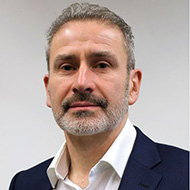Actor jokes that it’s always scary animals named after him.
A new species of snake, discovered by researchers in the Peruvian Andes, has been named after the Hollywood actor Harrison Ford.
Tachymenoides harrisonford, a type of slender snake, is pale yellowish-brown and black, colours which help it to remain camouflaged in its mountain habitat. The specimen found was 41cm long.
The snake was discovered in a remote location in the Otishi National Park, in an area that has not yet been thoroughly scientifically surveyed due to a combination of steep mountains and dangers posed by the illegal drugs trade.
The researchers have chosen to name the snake after the star of the Indiana Jones films because of his support for wildlife conservation. Mr Ford is vice-chair of the not-for-profit environmental organisation Conservation International.
It is the third species to be named after the actor, joining a species of ant (Pheidole harrisonfordi) and a type of spider (Calponia harrisonfordi).
Mr Ford said: “These scientists keep naming critters after me, but it’s always the ones that terrify children. I don’t understand. I spend my free time cross-stitching. I sing lullabies to my basil plants, so they won’t fear the night.”
“In all seriousness, this discovery is humbling. It’s a reminder that there’s still so much to learn about our wild world — and that humans are one small part of an impossibly vast biosphere.
“On this planet, all fates are intertwined, and right now, one million species are teetering on the edge of oblivion. We have an existential mandate to mend our broken relationship with nature and protect the places that sustain life.”
The full description of the snake has been published this month in the journal Salamandra.
Image (C) Edgar Lehr/Conservation International



 NOAH has elected its board team, as part of its annual general meeting.
NOAH has elected its board team, as part of its annual general meeting.